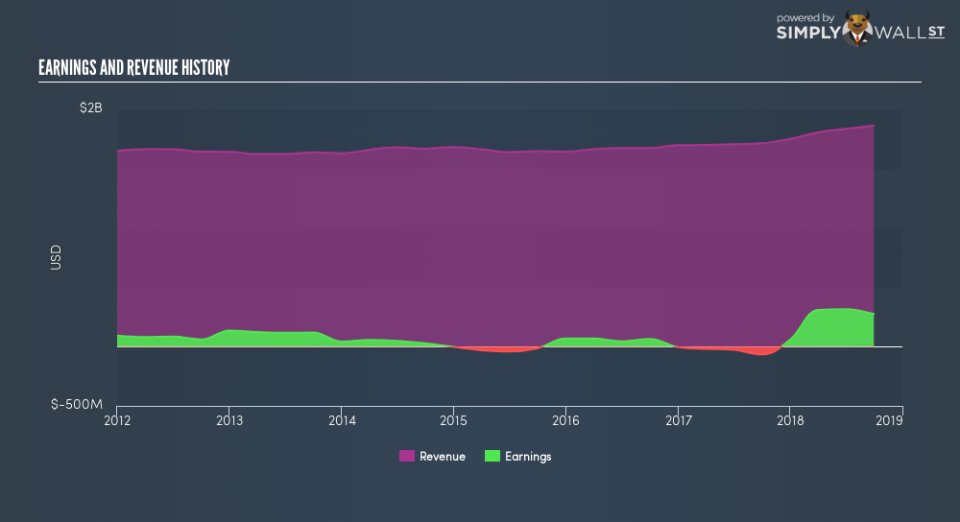Before You Buy Covanta Holding Corporation (NYSE:CVA), Consider Its Volatility

Anyone researching Covanta Holding Corporation (NYSE:CVA) might want to consider the historical volatility of the share price. Volatility is considered to be a measure of risk in modern finance theory. Investors may think of volatility as falling into two main categories. First, we have company specific volatility, which is the price gyrations of an individual stock. Holding at least 8 stocks can reduce this kind of risk across a portfolio. The other type, which cannot be diversified away, is the volatility of the entire market. Every stock in the market is exposed to this volatility, which is linked to the fact that stocks prices are correlated in an efficient market.
Some stocks see their prices move in concert with the market. Others tend towards stronger, gentler or unrelated price movements. Some investors use beta as a measure of how much a certain stock is impacted by market risk (volatility). While we should keep in mind that Warren Buffett has cautioned that ‘Volatility is far from synonymous with risk’, beta is still a useful factor to consider. To make good use of it you must first know that the beta of the overall market is one. A stock with a beta greater than one is more sensitive to broader market movements than a stock with a beta of less than one.
See our latest analysis for Covanta Holding
What CVA’s beta value tells investors
With a beta of 1.05, (which is quite close to 1) the share price of Covanta Holding has historically been about as voltile as the broader market. Using history as a guide, we might surmise that the share price is likely to be influenced by market voltility going forward but it probably won’t be particularly sensitive to it. Many would argue that beta is useful in position sizing, but fundamental metrics such as revenue and earnings are more important overall. You can see Covanta Holding’s revenue and earnings in the image below.
Does CVA’s size influence the expected beta?
Covanta Holding is a small company, but not tiny and little known. It has a market capitalisation of US$1.7b, which means it would be on the radar of intstitutional investors. Small companies often have a high beta value because the stock price can move on relatively low capital flows. So it’s interesting to note that this stock historically has a beta value quite close to one.
What this means for you:
It is probable that there is a link between the share price of Covanta Holding and the broader market, since it has a beta value quite close to one. However, long term investors are generally well served by looking past market volatility and focussing on the underlying development of the business. If that’s your game, metrics such as revenue, earnings and cash flow will be more useful. This article aims to educate investors about beta values, but it’s well worth looking at important company-specific fundamentals such as Covanta Holding’s financial health and performance track record. I highly recommend you dive deeper by considering the following:
Future Outlook: What are well-informed industry analysts predicting for CVA’s future growth? Take a look at our free research report of analyst consensus for CVA’s outlook.
Past Track Record: Has CVA been consistently performing well irrespective of the ups and downs in the market? Go into more detail in the past performance analysis and take a look at the free visual representations of CVA’s historicals for more clarity.
Other Interesting Stocks: It’s worth checking to see how CVA measures up against other companies on valuation. You could start with this free list of prospective options.
To help readers see past the short term volatility of the financial market, we aim to bring you a long-term focused research analysis purely driven by fundamental data. Note that our analysis does not factor in the latest price-sensitive company announcements.
The author is an independent contributor and at the time of publication had no position in the stocks mentioned. For errors that warrant correction please contact the editor at editorial-team@simplywallst.com.

